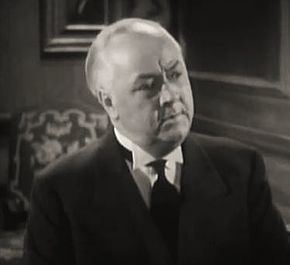Occupation Actor Years active 1915–1949 | Name Charles Coleman Role Character actor | |
 | ||
Full Name Charles Pearce Coleman Born December 22, 1885 ( 1885-12-22 ) Sydney, New South Wales, Australia Died March 8, 1951, Woodland Hills, California, United States Movies There Goes My Girl, Bachelor Apartment, The Whistler, Free and Easy, Merrily We Go to Hell Similar People Lowell Sherman, Joseph Santley, Henry Koster, William A Wellman, William Keighley | ||
Charles Coleman (December 22, 1885 – March 8, 1951) was an Australian-born American character actor of the silent and sound film eras.
Contents
Biography
Coleman began his film career in the 1915 silent film, The Mummy and the Humming Bird, which was also the screen debut of Charles Cherry, a noted stage actor. In his over 200 performances in films, he would appear in over half of them as either a butler, doorman/concierge, valet, or waiter. The 1930s would see Coleman appear in such notable films as Beyond Victory (1931), starring Bill Boyd and James Gleason, the Wheeler & Woolsey comedy Diplomaniacs (1933), 1934's Born to Be Bad which starred Loretta Young and Cary Grant, the 1934 version of Of Human Bondage starring Bette Davis and Leslie Howard, the first film to star the pairing of Fred Astaire and Ginger Rogers, The Gay Divorcee (1935), the first feature-length film to be shot entirely in Technicolor, Becky Sharp, 1936's Magnificent Obsession starring Irene Dunne and Robert Taylor, the Spencer Tracy vehicle, Captains Courageous (1937), The Prince and the Pauper (1937), starring Errol Flynn and Claude Rains, and the Reginald Owen version of A Christmas Carol (1938).
The 1940s would see Coleman's prolific career continue, including roles in many more notable films. Among these were: Buck Privates (1941), the first film starring the comedy duo of Abbott and Costello; 1943's Du Barry Was a Lady, starring Red Skelton, Lucille Ball, and Gene Kelly; Orson Welles and Joan Fontaine in the 1944 version of Jane Eyre; the 1945 film The Picture of Dorian Gray, with George Sanders, Donna Reed, Angela Lansbury, and Peter Lawford; and the 1949 comedy A Connecticut Yankee in King Arthur's Court, starring Bing Crosby and Rhonda Fleming.
The last film Coleman would work on was the Gene Autry vehicle, The Blazing Sun, which was released in November 1950. Double Dynamite, starring Jane Russell, Groucho Marx, and Frank Sinatra, would be the final film released in which he would appear, which would premiere in New York City on Christmas Day 1951. Coleman had worked on the film in 1948, but it was shelved for several years by Howard Hughes, and not released until after Coleman's death. Coleman died of a stroke on March 8, 1951, and was cremated and interred at Chapel Of The Pines Crematory in Los Angeles.
Filmography
(Per AFI database)
